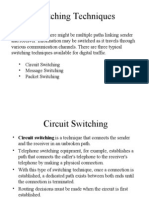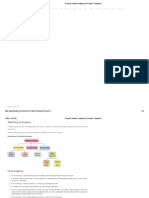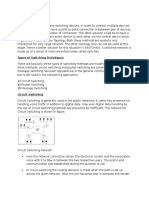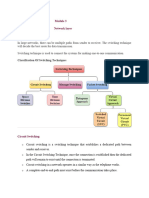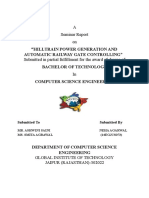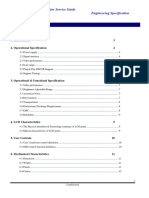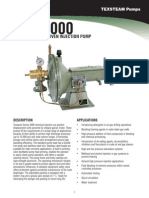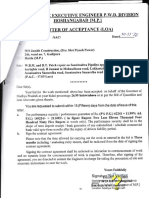0% found this document useful (0 votes)
99 views1 pageMessage Switching
Message switching is a data transmission method in computer networks that treats entire messages as single units, utilizing a store and forward mechanism at intermediate nodes. It allows for flexible routing without a dedicated path, but can introduce delays and requires complex routing mechanisms. While less common than packet switching, message switching can be advantageous in scenarios where routing flexibility is needed.
Uploaded by
tech4fresherssCopyright
© © All Rights Reserved
We take content rights seriously. If you suspect this is your content, claim it here.
Available Formats
Download as ODT, PDF, TXT or read online on Scribd
0% found this document useful (0 votes)
99 views1 pageMessage Switching
Message switching is a data transmission method in computer networks that treats entire messages as single units, utilizing a store and forward mechanism at intermediate nodes. It allows for flexible routing without a dedicated path, but can introduce delays and requires complex routing mechanisms. While less common than packet switching, message switching can be advantageous in scenarios where routing flexibility is needed.
Uploaded by
tech4fresherssCopyright
© © All Rights Reserved
We take content rights seriously. If you suspect this is your content, claim it here.
Available Formats
Download as ODT, PDF, TXT or read online on Scribd
/ 1


















